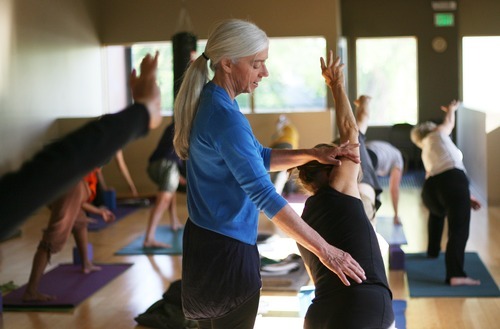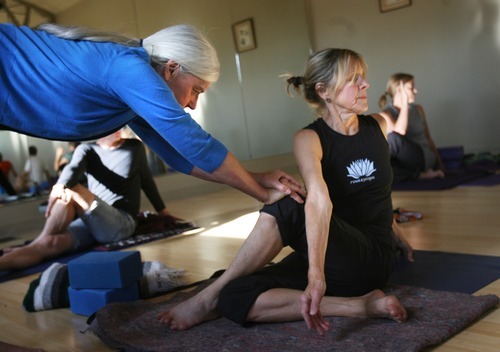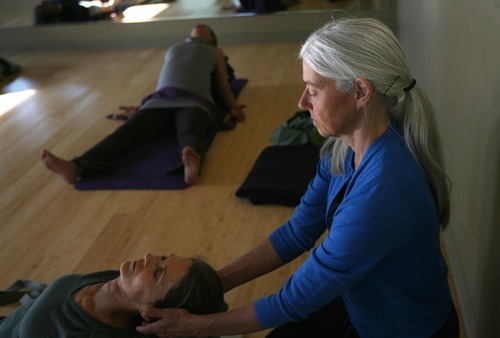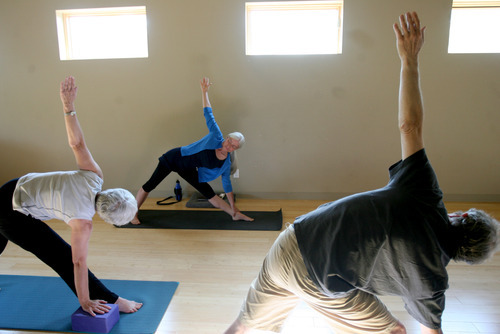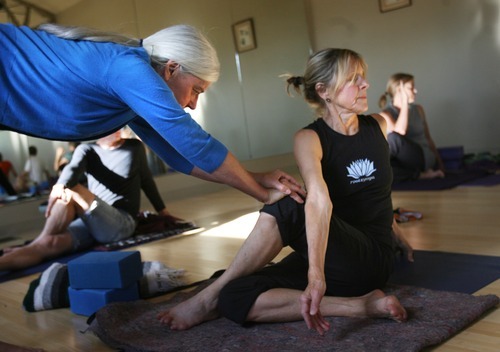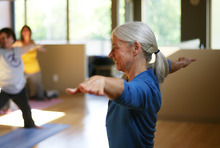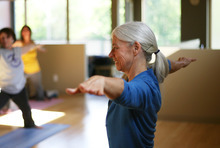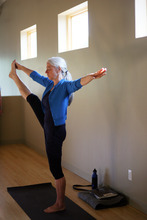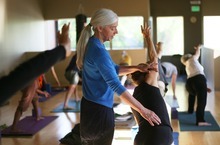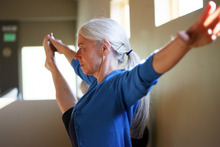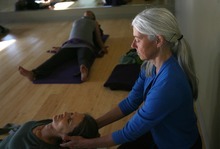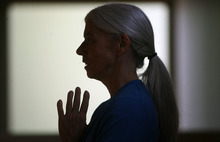This is an archived article that was published on sltrib.com in 2012, and information in the article may be outdated. It is provided only for personal research purposes and may not be reprinted.
We are a nation of couch potatoes, but that doesn't mean we know how to sit.
We know how to slouch. We know how to lean toward a screen and hunch over a desk. But we don't know how to sit still and straight so that our minds might be quiet. When we try, we discover it's harder than it looks.
Charlotte Bell remembers going to her first five-day meditation retreat, which required her to sit upright and silent for hours each day.
"At some point, every part of my body chimed in, and sometimes shouted at me, pummeling me with its resistance," she recalls. "My knees screamed, my back and shoulders veritably shrieked. None of this helped my attitude, which became more dour with each agonizing minute."
It's difficult to make your mind empty when your body is so full of complaints.
That's why Bell, who has taught yoga in Utah for 30 years, has written Yoga for Meditators, released this spring by Rodmell Press. Despite the title, the book is also a recipe for all of us who sit too long and too poorly in our regular lives.
Yoga as it is practiced in America these days can sometimes seem like a competitive sport (Is my triangle pose as straight as hers? Am I sweating enough? Is my lunge sufficiently deep?). But the physical poses of yoga — asana in Sanskrit — were developed to alleviate the physical rigors of "sitting practice." You did a pose so that you could survive your meditation mat.
—
A way of living • Yoga, as delineated in the 2 millennium-old Yoga Sutras, was not just about poses but was a way of living. The Eight Limbs of Yoga included moral precepts, breathing practices, "retirement of the senses," concentration and meditation. The more athletic poses that have become emblematic of yoga in the West were actually introduced to Indian yogis by the British.
Bell initially found yoga in 1982 in, of all places, Las Vegas, where she had moved after college in Indiana. Her father had been a gymnast and Bell had inherited his flexibility. But what appealed to her even more than the ease with which she could do a backbend was the feeling of calm she felt at the end of each class.
When she moved to Salt Lake City a few months later, she studied and apprenticed with Olivia Mason and David Riley, two of the half-dozen yoga teachers in the city at the time. Even up until 10 years ago, Bell knew everybody who taught yoga here.
Now, after the yoga boom of the past decade, she says she knows maybe 1 percent of the hundreds of people who have been trained as yoga teachers in the Salt Lake Valley.
As Dayna Macy, communications director of Yoga Journal, writes: Since 2001, yoga has moved "from semi-fringe smack into the mainstream." According to a 2008 survey conducted for the journal, Americans spend $5.7 billion a year on yoga classes and products, an increase of 87 percent from 2004.
All that yoganess — power yoga and yin yoga and laughter yoga and senior yoga — is good news (so many people moving and aligning their bodies), Bell says. But she worries that "the yoga most people are practicing is but a fraction of what yoga was intended to be."
Writing on the blog for Hugger Mugger yoga products, Bell noted recently that yoga is a "radical" practice that is less about a workout and more about a commitment to observing and then uprooting the way we view life.
"This is yoga's potential," she writes, "to help us see clearly that the very things we spend our precious lives on earth pursuing are not what will ultimately make us happy."
Even if we never meditate, yoga postures can begin to quiet the nervous system so that our minds can quiet down too, she says. She quotes one of the three yoga sutras that address the postures: "Asana is mastered when all effort is relaxed and the mind is absorbed in the infinite."
But mastery doesn't mean being flexible enough to wrap your leg around your head. "You could be in a forward bend like this," Bell says, standing up and then bending her head and shoulders ever so slightly, almost comically, "and be in mastery."
—
Finding balance • Bell studied with B.K.S. Iyengar in India, where she learned his Hatha style of yoga.
But it took her years, she says, to realize that she sometimes was what she calls a "yoga show-off," one of those teachers who did indeed occasionally demonstrate the pigeon pose by wrapping her ankle around her head. It "reinforced my attachment to my identity as a bendy person," says Bell, whose epiphany about this one day in class freed her from ever having to do those extreme postures again.
Bell currently teaches at IWKI (International Wado-Ryu Karate-Do Institute) in Salt Lake City. Her classes are, like Bell herself, typically low-key. She describes herself as an introvert, the kind of person who might, at a party, retreat to a corner. She plays the oboe and English horn with the Salt Lake Symphony, Scherzando Winds, blue haiku and Red Rock Rondo. Her humor is quiet, too, but bendy in its own way, the equivalent of a seated twist pose compared to a feathered peacock pose.
One winter 14 years ago I attended a five-day silence retreat that Bell helped run. She talked to us about Buddha's five precepts, the first one being to do no harm. We have bug jars here, she told us. "You can catch the bugs and put them outside." Then she paused. "And then they'll die outside." Pause. "This works better in the summer."
She also made us feel better about our own fidgetiness and dread of silence by admitting that at her first 30-day silence retreat, she spent the first 10 days plotting ways to escape.
Yes, she used to think that the world would be a better place if everyone did yoga and meditated. Now, she says, she realizes that was "spiritual arrogance." What the world needs instead, she writes, is "more people respecting each other's individual paths and preferences."
Yoga for Meditators includes tips on sitting, and 22 poses to make sitting easier — poses that open the hips, ease back tension, stretch shoulder muscles. Set a timer to remind yourself to get up every 20 minutes from your desk, she suggests, and do some of them. Or just one.
"One pose a day," Bell says, "is better than none."
Reading about sitting
Charlotte Bell's second book, Yoga for Meditators, is published by Rodmell Press ($14.95).



